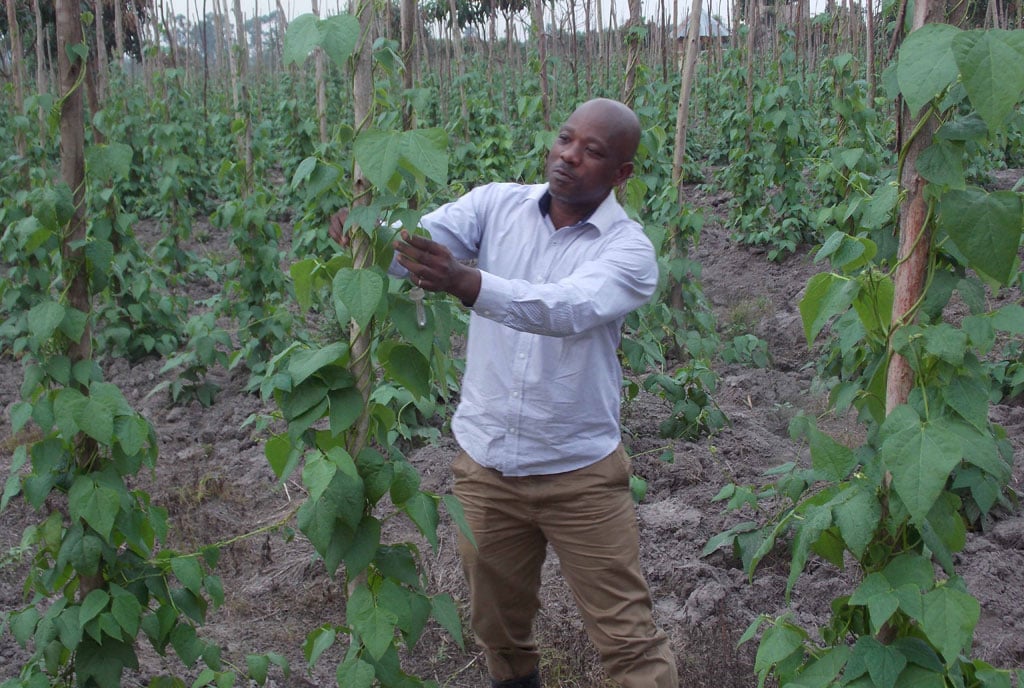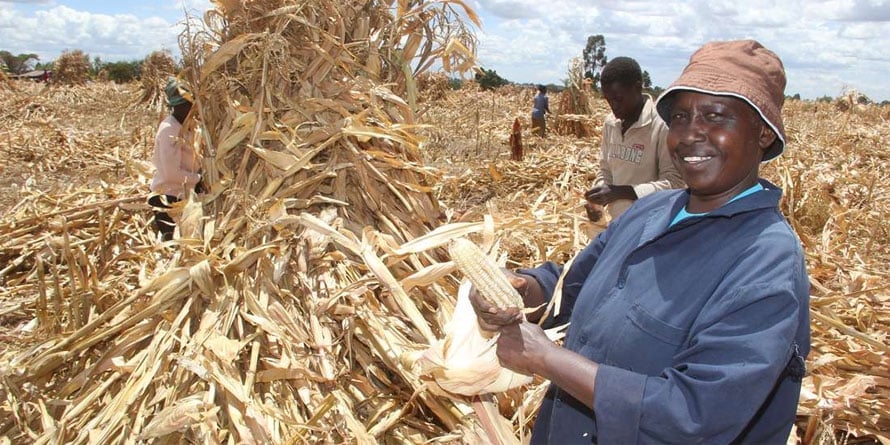
A bean farmer in Rakai District examines his crop. PHOTO/MICHAEL J SSALI
There is a high value market for any food crop that conforms to the correct production standards. When farmers grow the beans and handle them carefully they stand a high chance of selling them at a very high price. It is no longer correct to categorize crops as cash crops or food crops.
They can all be sold for cash. As farmers our struggle is against both poverty and food insecurity. Beans are therefore both a cash crop and a food crop.
They are a rich source of protein and they are consumed in almost every home.
Per capita consumption of beans in Uganda currently stands at 13.2 kilogrammes according to Faostat. Beans are widely grown in nearly all parts of Uganda, with Buganda and Bunyoro being among the leading producing regions.
According to the 2020 Annual Agricultural Survey of the Uganda Bureau of Statistics (UBOS) Uganda produced 670,000 metric tonnes of beans.
The survey indicated that 39 percent households cultivated beans in the first rainy season while 46 percent households grew beans in the second rainy season. Buganda produced 120,000, Bunyoro 111,000, Teso 7,100, and Bukedi 6,100 metric tonnes.
Early maturity
Since beans take a few months to mature and be harvested they are a good crop to depend on for cash. It is also a crop that can be grown on borrowed or hired land. All things being equal, it is possible to produce between 1800 and 2500 kilogrammes of beans per acre.
The bean value chain includes input suppliers, farmers, traders, and consumers who include institutions like schools, hospitals, etc.
“Successful bean production begins with good seed selection,” says Mr John Mugera, formerly Agricultural Services Extension Officer, in Masaka District.
Propagation
“Treated seeds are recommended because they are protected from any pests that could destroy the seed in the soil before germination.” He goes on to recommend fertiliser application where the soil is not good enough for crop production.
“Foliage fertilisers are good when the beans have about three or four leaves. It is however important to seek guidance from the area Agricultural services extension officer about what particular fertilisers to apply. Such people can even carry out a soil test to be sure what nutrients are missing.”
Organic manure
Some people use organic manure such as poultry droppings by spreading it all over the garden and digging it into the soil. He also said inorganic manure such as DAP, Urea, and NPK may be used, taking care to apply the right amounts by reading the user instructions or by following agricultural extension officers’ advice.
Lwengo District Principal Agriculture Officer, Peter Bamwesigye, said bean farmers must seek certified seed sources and ensure they have a well-prepared seedbed.
“Early seed preparation and early planting minimises the chances of pest attack and enables the beans to germinate and grow before the weeds emerge,” he told Seeds of Gold.
“Fertile deep soil is always preferred. Plant when there is just sufficient moisture in the soil, too much moisture can cause rotting of the seeds that is why farmers are advised to plant clean, sorted, and treated bean seeds.” Spacing of 50cm between rows and 10cm between plants is recommended.
Diseases
A leaflet prepared by ASARECA, an agricultural research organisation in Eastern Africa, indicates that beans are commonly attacked by bean stem maggot (Bean Fly), flower thrips and aphids.
“To minimize losses due to bean fly, plant early at the onset of rains, earth up at first weeding, improve soil fertility and seed dress with Endosufan at the rate of 10mls per 10 kilogrammes of seed the day before planting,” says the small ASARECA booklet.
“To control flower Thrips, alchids and other insect pests use any recommended SYSTEMIC pesticide. Spray when you see the first flower and repeat after 14 days.” It is also recommended to practice crop rotation as a way to minimise disease attack.
Varieties
Some of the most recommended bean varieties according to the ASARECA/ NARO booklet include NABE 15 which is expected to give yields of between 1800 to 2000 kilogrammes per hectare. It is mature and ready for harvest between 60 and 65 days.
The farmer is advised to plant between 20 and 25 kilogrammes per acre. It is marketable, suitable for all regions, tasty, and swells when cooked. The other recommended variety is NABE 16 which can be harvested between 60 and 70 days. It has almost similar attributes as NABE 15.
Some bean varieties are best suited for some regions. NABE 18, for example, is mainly recommended for northern Uganda. Its maturity period ranges from 65 and 75 days and its tasty.
Agricultural services extension officers in different parts can provide guidance regarding the best bean varieties for farmers to plant. Some bean varieties are bred to tolerate difficult climatic conditions such as drought while others are bio-fortified and are more nutritious.
Advice
Mugera advises farmers to harvest the beans as soon as they show signs of maturity. “Some farmers prefer to harvest the beans when they are yellowish and fresh while others harvest beans when they are dry. It is good to harvest the dry beans during cold weather to avoid cracking of the pods and losing some of the beans.”
He says threshing must be done on clean preferably cemented floors or on mats. He also says winnowing should be delayed as beans kept with little bits of husks take longer to be invaded by pests. He insisted that farmers must seek guidance from their agricultural extension officers about what they can do to keep pests at bay. “It can be very dangerous if farmers just rush to buy pesticides and apply them on harvested beans without any expert guidance.”
He further suggested thorough drying of the beans and spreading them over a clean dry surface inside the house where they can be turned over and over again along with regular sun drying to discourage pests.
They must be put on clean mats or tarpaulin to dry with no chance of domestic livestock trampling over them and defecating on them. Before selling the beans they should be well sorted to remove all foreign material.

